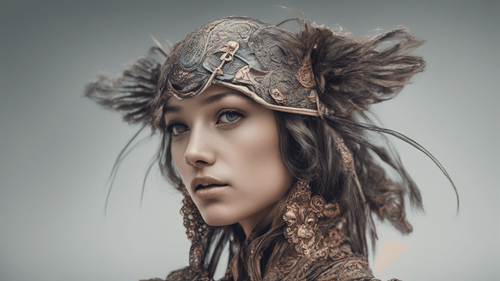
Introduction
In the modern age of rapid technological advancements, artificial intelligence has seamlessly integrated into various aspects of our lives, revolutionizing industries and pushing the boundaries of innovation. One remarkable area where AI's influence is being strongly felt is in the realm of art. The convergence of AI and photography has given birth to a mesmerizing phenomenon – AI art based on photos. In this article, we'll explore the captivating world of AI-powered artistic transformations and delve into the ways in which this technology is reshaping our understanding of creativity.
Understanding AI Art Based on Photo
The term "AI art based on photo" encapsulates the process of utilizing sophisticated machine learning algorithms to transform ordinary photographs into extraordinary pieces of art. These algorithms analyze the visual elements of a photograph – color palettes, shapes, textures – and reinterpret them to produce striking artworks that evoke emotions and intrigue. This fusion of data-driven analysis and human creativity is a testament to the power of artificial intelligence in augmenting human potential.
The Creative Alchemy: How AI Transforms Photos into Art
Deep Learning Networks: The Artists Behind the Scenes
AI artistry relies heavily on deep learning networks, particularly Generative Adversarial Networks (GANs). GANs consist of two neural networks – a generator and a discriminator – engaged in a captivating dance of creation and critique. The generator crafts images, while the discriminator evaluates them. Through repeated interactions, GANs refine their artistic prowess, producing images that blur the line between reality and imagination.
Style Transfer: Infusing Artistic Flair
Style transfer is a fascinating technique within AI art. It involves transferring the style of a famous artwork to a photograph, resulting in a harmonious blend of artistic aesthetics and real-world subjects. Imagine Van Gogh's "Starry Night" imbued into a serene landscape – that's the enchanting effect of style transfer.
Neural Style Transfer: A Closer Look
Neural Style Transfer (NST) is a subfield of style transfer that delves deeper into the neural mechanisms of art creation. By separating content and style from an image, NST allows for more precise control over the transformation process. The content remains intact while the style is intricately woven, resulting in awe-inspiring hybrids.
AI Art Based on Photo in Practice
Photo-to-Painting: From Pixels to Pigments
AI art based on photos has manifested in various forms, and one of the most captivating is photo-to-painting transformation. Algorithms analyze the input photo and reimagine it with the brushstrokes and palettes of iconic artists. The result? A digital canvas that mirrors the works of the great masters, inviting viewers into an immersive art experience.
Photorealistic Rendering: Blurring Realities
On the flip side, AI can also blur the lines between reality and art by generating photorealistic images from scratch. By training on vast datasets of photographs, AI algorithms can craft images that are almost indistinguishable from actual photographs, leading to applications in architecture, design, and more.
Interactive Art Generation: Where Humans and AI Co-create
Imagine collaborating with an AI to create art. This interactive approach involves human artists guiding AI algorithms to generate specific visuals. The synergy between human creativity and AI's computational prowess results in collaborative masterpieces that transcend individual capabilities.
FAQs
How Does AI Understand Aesthetics?
AI's understanding of aesthetics is rooted in data analysis. By analyzing vast collections of artworks, AI algorithms learn to recognize patterns, color harmonies, and compositional elements that appeal to human aesthetics.
Can AI Replace Human Artists?
No, AI can't replace human artists. While AI can produce impressive art, it lacks the emotional depth, personal experiences, and conceptual reasoning that human artists infuse into their work.
Are There Ethical Concerns in AI Art?
Indeed, ethical concerns arise in AI art, particularly regarding copyright and originality. The source images used for transformation and the ownership of generated art can be contentious issues.
What's the Future of AI Art?
The future of AI art is exhilarating. As AI algorithms evolve, we can anticipate more sophisticated and personalized art forms, pushing the boundaries of creativity and innovation.
Can Anyone Create AI Art?
Yes, anyone with access to AI art tools can experiment and create. While a deep understanding of AI isn't necessary, a basic grasp of how the technology works can enhance the creative process.
How Can AI Art Enhance Interior Design?
AI-generated art offers unique and customizable options for interior design. It enables the creation of bespoke artworks that harmonize with various design styles and color palettes.
Conclusion
AI art based on photo has emerged as a captivating intersection of technology and creativity. Through intricate algorithms and neural networks, AI breathes new life into photographs, transcending their original forms and generating art that resonates with human emotions. As we journey into the future, the boundaries of artistic expression will continue to expand, driven by the limitless potential of AI. So, embrace the synergy between machine intelligence and human imagination, and immerse yourself in the awe-inspiring world of AI artistry.